SCOTTISH RITES

The following page contains information found in the
booklet titled "Facts of Scottish Rite" with some editing and other
inputs by yours truly.
TABLE OF CONTENTS
Introduction
Purpose, History, Development
Declaration of Principles
Scottish Rite Creed
Organization and Operation
Government of the Rite
The Caps and Their Significance
Scottish Rite Rings
General Membership Requirements
Degree Structure
Synopsis or Lessons of each Degree
Once you are done reading this page, if interested you can read
The Book of the Ancient and Accepted Scottish Rite of Freemasonry 1914 where
it goes into more details about each degree.
INTRODUCTION
Over the years there have been many
misconceptions about the purpose, requirements and operations of Scottish Rite
Freemasonry. A few local centers have published and circulated explanatory
pamphlets which have been most helpful to better understanding on the part of
nonmembers and members alike. However, even in this day such statements are
heard as "You have to go to Scotland to acquire the degrees.". .
."It costs hundreds of dollars to become a member.". . ."It takes
years to become a 32° Mason.". . ."All degrees must be taken at the
same time.". . ."A candidate must learn all the signs and words."
. . ."One must be a member of another collateral Masonic order before being
eligible for Scottish Rite.". . ."You have to wait for an invitation
to join."
The following pages have been prepared in brief
question and answer form not only to dispel such misunderstandings but to
furnish added information to Master Masons seeking "more light."
Since this booklet has been written for
use throughout the
Northern Jurisdiction, it can not be too specific as to the
methods followed in each of the fifteen states and the 110 Scottish Rite
centers. Basic principles, regulations and procedures are set forth, and the
reader is cordially encouraged to seek further detail from the local Scottish
Rite organization nearest to him.
Over the years, Master
Masons have continued their search for "more light"
through the medium of Scottish Rite for countless reasons:
- Scottish Rite answers many questions raised in the
Symbolic Lodge.
- Scottish Rite degrees can provide a better
understanding of the meaning of Freemasonry and its basic principles through
the use of drama and appeal to the eye as well as the ear.
- Scottish Rite work is always conducted in an
atmosphere of reverence and dignity.
- Scottish Rite membership will enlarge your circle
of Masonic acquaintances and provide additional opportunities for congenial
fellowship.
- Scottish Rite affords varied opportunities for
active service in keeping with the talents of each member.
- Scottish Rite through its benevolences not only
assists members in distress but has established a program designed to
benefit all mankind.
- Scottish Rite, long an international organization,
continues its work for better understanding among nations and a just and
peaceful world.
One important point, which must be recognized by all Masons, is the fact that
the Scottish Rite shares the belief of all Masonic organizations that there is
no higher degree than that of Master Mason. The Supreme Council and its
subordinate bodies a~ knowledge the Masonic supremacy of the Symbolic Grand
Lodges, and the Grand Master of Masons is recognized as the raining Masonic
officer present when in attendance at any Scottish Rite meeting.
Our degrees are in addition to and are in no way "higher" than Blue
Lodge degrees. Scottish Rite work amplifies and elaborates on the lessons of the
Craft. It should never be forgotten that termination of a member's Symbolic
Lodge standing automatically terminates his Scottish Rite membership, whether
his rank be 14° or 33rd °
Finally the charitable endeavor of Scottish Rite is one of its great
strengths. They support Schizophrenic Research and have contributed millions of
dollars for the study of this dread disease. Another charity they support is
Scholarship Program for students to attend schools, which are manage at the
local level. The most recent and far reaching of the charities of the
Scottish Rite are the Masonic Children's Learning Centers for the tutoring of
children afflicted with dyslexia.
back to top
PURPOSE, HISTORY, DEVELOPMENT
What is Scottish Rite?
Scottish Rite is one of the two branches of
Freemasonry in which a Master Mason (Third Degree) may proceed after he has
completed the three degrees of Symbolic or Blue Lodge Masonry. (The other branch
is known as York Rite consisting of Capitular and Cryptic Masons and Knights
Templar.)
Scottish Rite includes the Degrees from the Fourth to the
Thirty-third, inclusive. The moral teachings and philosophy of Scottish Rite are
an elaboration of the basic Masonic principles found in Blue Lodge or Symbolic
Freemasonry. Sometimes likened to a "College of Freemasonry," Scottish
Rite uses extensive drama and allegory to emphasize the content and message of
its degrees.
Where did Scottish Rite originate?
Masonic historians throughout the world still seek the
positive answer to this question. The use of the word "Scottish" has
led many Masons to believe that the Rite originated in Scotland and that
Scotland remains the fountainhead of its activity. Such is not the case.
Actually, the first reference to the Rite appears in
old French records where the word "Ecossais" (meaning Scottish) is to
be found. During the latter part of the 17th Century, when the British
Isles were torn by strife, many Scots fled to France and resumed their Masonic
interests in that country. It is felt that this influence contributed to the use
of the word "Scottish".
In 1732, the first "Ecossais," or Scottish Lodge, was organized in
Bordeaux, one of the oldest and most influential Masonic centers in France. The
membership included Scottish and English Masons. In 1761, certain Masonic
authorities in France granted a patent to Stephen Morin of Bordeaux to carry the
advanced degrees across the sea to America. In 1763, Morin established these
degrees in the French possessions in the West Indies and
thence to the United States. What he established consisted of a system of 25 so
called higher degrees which flourished in France, and which were known as the
"Rite of Perfection.". Within a few years after 1763, other degrees
were added, until the Rite had a ritual structure of 33 degrees - the first
three being exemplified in a Symbolic Lodge, if a Grand Lodge with subordinate
Lodges existed in the area.
The first Supreme council was established in
Charleston, South Carolina, in 1801, and all other regular Supreme Councils
throughout the world are descended from it. It is of interest to note that the
Supreme Council for Scotland did not come into existence until 1846 and thus
does not hold any priority which would call for the work of the Rite to be
performed in that country.
When did Scottish Rite commence in
this country?
Antecedents of Scottish Rite existed in Albany, New
York, as early as 1767. The first Supreme Council was organized at Charleston,
S. C., in 1801, to cover the United States. In 1813, the Northern Supreme
Council came into being as the United States expanded and as an offshoot of the
Charleston group, so there are now two Supreme Councils in the United States.
Ours is the Supreme Council for the Northern Masonic Jurisdiction with
headquarters in Boston (Lexington), Mass., and covering 15 northeastern, middle
Atlantic and Midwestern states. The other is the Supreme Council for the
Southern Jurisdiction with headquarters at Washington, D. C., and covering the
remaining 35 states, the District of Columbus, and U.S. territories and
possessions.
In 1767, Henry Francken, who had been deputized by Morin, organized a Ledge
of Perfection in Albany, New York This was the forerunner of what was to become
the Ancient Accepted Scottish Rite in the United States. During the Colonial
Period, other deputies, appointed by Morin, organized Masonic groups which
conferred the advanced degrees at other important points along the Atlantic
seaboard, including Charleston, South Carolina These groups were independent and
without centralized supervision or control; however, they all agreed that their
authority came from Stephen Morin in Jamaica in the West Indies.
On May 31, 1801, the Supreme Council of the Thirty-third degree for the
United States of America-the first Scottish Rite Supreme Council in the
world-was founded in Charleston, South Carolina. Its aim was to unify
these competing groups and to bring Masonic order out of chaos. The full
membership of this Supreme Council consisted of 11 Grand Inspectors General.
Of these 11-John Mitchell, Frederick Dalcho, Abraham Alexander, Emanuel De
LaMotta, Thomas Bartholomew Bowen, Israel De Lieben, Isaac Auld, Le Comte
Alexandre Francois Auguste de Grasse, Jean Baptiste Marie Delahogue, Moses Clava
Levy and James Moultri~nine were born abroad and only Brothers Isaac Auld and
James Moultrie were native born. In religion, four were Jews, five were
Protestants, and two were Roman Catholics.
On August 4, 1813, Emanuel De La Motta, 33rd °, of Savannah, Georgia, a
distinguished Jewish merchant and philanthropist, and Grand Treasurer General of
the Supreme Council at Charleston, organized in New York City the Supreme
Council of the Thirty-third degree for the Northern District and Jurisdiction of
the United States of America.
The first Sovereign Grand Commander was Ill. Daniel D. Tompkins, 33rd °. He
filled this office from 1813-25. He was at the same time Vice-President of the
United States for two terms, under President Monroe. The first Grand Secretary
General of this Supreme Council, its Conservator during the era of anti-Masonic
attacks, and its third Sovereign Grand Commander from 1832-51, was Ill. John
James Joseph Gourgas, 33rd °.
Both the Northern and the Southern Jurisdictions made slow progress in
unifying the scattered degree conferring groups, and in standardizing the
rituals. They were handicapped by the pride in the local organizations; by
leadership jealousies; by the anti-Masonic agitation of 1826-40, which almost
destroyed Freemasonry; by the War Between the States, and by other matters. The
Union of 1867, however, completed the process of unification, in the Northern
Masonic Jurisdiction, when the last irregular Supreme Council finally
acknowledged the authority of the regular Supreme Council. From that Union,
there arose what is the present Supreme Council for the Northern Masonic
Jurisdiction of the United States of America.
How long has Scottish Rite been an
international organization?
Since its now officially-recognized beginning in 1801
in Charleston, Scottish Rite has spread throughout the globe. In several
countries, particularly in Latin America, Scottish Rite was the pioneer Masonic
organization with Symbolic or Blue Lodge Freemasonry being organized afterwards.
The Rite was carried to the new world by French and Spanish members; to India,
the Far East, and Africa by English, Irish and Scotch members; to Indonesia by
Dutch members, and so on.
back to top
The following are the Declaration of Principles that the Scottish Rites
adhere to:
This Supreme Council reaffirms its unswerving loyalty to the fundamental
purpose of Freemasonry, which purpose from time immemorial has been to improve
and strengthen the character of the individual man, and through the individual,
the character of the community, thus under girding the community with those
spiritual values which give it strength and stability.
This Supreme Council believes that this purpose is to be attained by laying a
broad basis of principle upon which men of every race, country, sect, and
opinion may unite.
Believing that good and true men can be trusted to act well and wisely, this
Supreme Council considers it the duty of the Fraternity to impress upon its
members the principles of personal righteousness and personal responsibility, to
enlighten them as to those things which make for human welfare, and to inspire
them with that feeling of charity, or well-wishing, toward all mankind which
will move them to translate principle and conviction into action.
To that end Freemasonry teaches a belief in God and faith in His divine
purposes. It encourages the worship of God in conformity with the dictates of
individual conscience. It stands for truth and justice, liberty and
enlightenment, fraternity and philanthropy.
This Supreme Council expects of its members strict obedience to the laws of
the land, and respect for their country's flag.
Such principles unite men and encourage the pursuit by them, individually and
collectively, of worthy endeavors and the attainment of the purposes inherent in
them In that unity, human character achieves its highest unfolding and provides
man's best hope for peace on earth and goodwill among men.
To the furtherance of these principles, all our ritual is directed and all
our efforts are aimed. To their furtherance, each Master Mason has pledged
himself and at the portal of the Scottish Rite has renewed that pledge.
This Supreme Council discountenances and rejects any attempt by any
international groups or confederations of Scottish Rite Supreme Councils to
legislate for individual Supreme Councils.
Recognizing that principles unite men, that programs sometimes divide them,
and that the preservation of unity of purpose and devotion to principle is
essential to Freemasonry, the Supreme Council affirms its continued adherence to
that ancient and approved rule of Freemasonry which forbids the discussion
within tyled doors of creeds, politics, or other topics apt to excite personal
animosities.
This Supreme Council further affirms its conviction that it is not only
contrary to the fundamental principles of Freemasonry but exceedingly dangerous
to its unity, strength, usefulness and welfare for Masonic Bodies in their
official capacity to take formal action or attempt to exercise pressure or
influence for or against any particular legislative project or proposal, or in
any way to attempt to procure the election or appointment of Governmental
officials, whether executive, legislative, or judicial, or to influence them,
whether or not members of the Fraternity, in the performance of their official
duties.
back to top
SCOTTISH RITE CREED
The cause of human progress is our cause, the
enfranchisement of human thought our supreme wish, the freedom of human
conscience our mission, and the guarantee of equal rights to all peoples
everywhere the end of our contention.
back to top
ORGANIZATION AND OPERATION
What is the Northern and Southern Masonic
Jurisdiction?
The Northern Masonic Jurisdiction specifically covers
the following fifteen states: Maine, New Hampshire, Vermont, Massachusetts,
Rhode Island, Connecticut, New York, New Jersey, Pennsylvania, Delaware, Ohio,
Michigan, Indiana, Illinois and Wisconsin. Its headquarters is in Lexington,
Massachusetts, a suburb of Boston.
The other Supreme Council in the United States is that of the Southern
Jurisdiction. It has its head quarters at Washington, D.C., and covers the
remaining 35 states, the District of Columbia, and the United States territories
and possessions.
How does Scottish Rite operate?
There are Scottish Rite centers called
"Valleys"
There are
four coordinate divisions within the Northern Scottish Rite:
- Lodge of Perfection, covering the
4° to 14° (presiding officer – Thrice Potent Master);
- Council of Princes of
Jerusalem, covering the 15° and 16° (presiding officer – Sovereign Prince);
-
Chapter of Rose Croix, covering the 17° and 18° (presiding officer – Most
wise Master),
- Consistory of Sublime Princes of the Royal Secret, covering
the 19° to 32° (presiding officer – Commander-in-Chief).
Within the Southern Scottish Rites, two of the divisions are merge into one
thus organized as follows:
- Lodge of Perfection, covering the
4° to 14° (presiding officer – Thrice Potent Master);
-
Chapter of Rose Croix, covering the 15° to 18° (presiding officer – Most
wise Master),
- Consistory of Sublime Princes of the Royal Secret, covering
the 19° to 32° (presiding officer – Commander-in-Chief).
How is Scottish Rite directed?
The Supreme Council is the governing body and meets
once a year in formal session.
This smaller group, which can be likened to a board
of directors, elects the officers of the Supreme council and determines its
policies. There are at least two "Active" members in each state, one
of whom is designated as "Deputy" by the Supreme Council, and who
exercises supervision of Scottish Rite activities in his state. The Supreme
Council, itself, is led by a Sovereign Grand Commander.
The Supreme Council Constitutions are the basic law
for all subordinate Scottish Rite Bodies.
back to top
GOVERNMENT OF THE RITE
Under the Grand Constitutions of 1786, a Supreme Council elects
its own Active Members and is self-perpetuating. It charters Subordinate Bodies
in cities (called Valleys) of states, territories, or countries (called
Orients). In the Southern Jurisdiction, the Subordinate Bodies must observe the
Statutes of our Supreme Council, its orders and regulations and, when The
Supreme Council is not in session, those of the Sovereign Grand Commander.
THE SOVEREIGN GRAND COMMANDER
The Sovereign Grand Commander is the highest ranking officer of The
Supreme Council and the chief executive and judicial officer of the Rite within
this Supreme Council’s Jurisdiction. He is the representative of The Supreme
Council when that Body is not in session and is invested with general powers of
supervision and administration everywhere within its Jurisdiction. The cap for
the Sovereign Grand Commander is violet in color and features a darker violet
band embroidered with laurel vine, leaf, and berry pattern in gold. On the front
is the symbol of his office, a Cross of Salem with crosslets.
SOVEREIGN GRAND INSPECTOR GENERAL
This is the title of an Active Member of The Supreme Council. There is
only one Active Member for any one Orient (state, territory, or country). He is
the highest ranking officer of the Rite within his jurisdiction, and, in
relation to the Rite, his powers are similar to those of a Grand Master of the
Symbolic Craft subject, however, to The Supreme Council and the Sovereign Grand
Commander. The cap of an Active Member is purple and features the symbol of his
office, a slanting Patriarchal Cross with crosslets.
DEPUTY OF THE SUPREME COUNCIL
In Orients (states, territories, or countries) which do not have an Active
Member, the Sovereign Grand Commander appoints a "Deputy of The Supreme
Council." The Deputy has powers similar to those of a Sovereign Grand Inspector
General. However, he has no vote in The Supreme Council and holds his office at
the pleasure of the Sovereign Grand Commander. The Deputy’s cap is white with a
scarlet band and features on the front a slanting Patriarchal Cross.
GRAND CROSS OF THE COURT OF HONOUR
This is the highest individual honor that The Supreme Council bestows. It
is voted very rarely to Thirty-third Degree Masons only for the most exceptional
and extraordinary services. The Grand Cross cap is white with a blue band. On
the front is a replica of the Grand Cross jewel, which is composed of a Teutonic
Cross, with an embroidered crimson rose with green leaves at its center.
INSPECTOR GENERAL HONORARY OF THE THIRTY-THIRD DEGREE
During the Biennial Session of The Supreme Council, Sovereign Grand
Inspectors General and Deputies nominate a small quota of members who are
Knights Commander Court of Honour to receive the Thirty-third Degree. A
committee reviews the nominations, but The Supreme Council must vote upon every
nomination. Members unanimously so elected become honorary members of The
Supreme Council. The Thirty-third Degree may not be requested. The Degree is
conferred solely out of recognition for outstanding services. The only
difference between the jewel of the Thirty-third Degree and that for an Active
Member of The Supreme Council is that the latter is larger. The cap for an
Inspector General Honorary is white with a white band edged in gold, featuring
the symbol for this honorary Degree, a red slanting Patriarchal Cross.
KNIGHT COMMANDER OF THE COURT OF HONOUR
The Rank of Knight Commander of the Court of Honour is not a Degree but an
Investiture bestowed upon members deserving recognition for faithful services to
the Rite. The respective Sovereign Grand Inspectors General or Deputies likewise
nominate members for this honor, and these must also be unanimously approved by
The Supreme Council. This Investiture is a prerequisite of receiving the
Thirty-third Degree at some later time, though relatively few receive this
distinction.
A Knight Commander of the Court of Honour is a Scottish Rite rank peculiar
to the Southern Jurisdiction, except that our Supreme Council has permitted the
Supreme Council for the Philippines (part of our Jurisdiction until 1949) to
continue the practice as one of their special honors bestowed.
The cap of the Knight Commander Court of Honour is red with a darker red
band trimmed in gold. In the center front is a representation of the Knight
Commander Jewel, a Passion Cross with fancy arms, featuring in the center a
trefoil embroidered in green encircled by the "Kt\
Comm\ Court of Honour" embroidered in gold. The symbol
used here, the tripod \, was regularly used in formal
Masonic documents in place of a period in the abbreviation of formal titles. Its
use is maintained as a tribute to the Craft’s distinguished past in much Masonic
writing today, such as in the Scottish Rite Journal, but it may be and
often is replaced by a standard period.
MASTER OF THE ROYAL SECRET
This is the title of a 32° member of the Scottish Rite. The cap of a
Master of the Royal Secret is black silk with a black band trimmed in gold. In
the center front is a double-headed eagle emblem with a rayed equilateral
triangle above in gold. The triangle is red, has 32° in its center, and is
trimmed with gold.
The jewel of the Thirty-second Degree is a Teutonic Cross of gold, one and
three-fourth inches square, with raised or beaded edges and a background frosted
surface, having in the center a wreath of green enamel, with a gold tie at the
bottom, and within the wreath the Roman numerals XXXII in gold.
FIFTY-YEAR MEMBER
Any 14° member of the Scottish Rite, Southern Jurisdiction, who is in good
standing and who became a member fifty years prior to the current calendar year
is entitled to recognition as such. Such recognition entitles the recipient to
receive a proper certificate and to wear a 50-year lapel pin or cap. The cap of
a 50-year member is blue with a blue band. In the front at the center is a
figure "50" surrounded by a green silk embroidered laurel wreath.
back to top
THE CAPS AND THEIR SIGNIFICANCE
As
the White Lambskin is the Badge of a Mason, so is the regulation cap the badge
of a Scottish Rite Mason. The caps of the Scottish Rite are prayer caps,
always to be worn during prayer. It is to show our
respect and devotion to God, and to identify ourselves as Masons of the
Scottish Rite. It may be worn at Scottish Rites meetings and throughout
the Reunion. Since they are prayer caps, they must not be worn on the street.
You may wonder, when you see the different color caps being worn by
various members, what they denote.
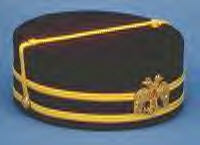
|
A
black cap indicates that the wearer has attained the 32nd degree.
The great majority of the members wear this black cap.
|
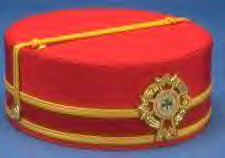
|
A
red cap means 32° Knight Commander of the Court of Honor (KCCH).
It is not a degree but an
investiture. It is one of the great honors in all Masonry to be designated
to receive this honor.
|

|
A
light blue cap means that the wearer has been a Scottish Rite Mason for fifty
years or more.
It is a great honor and achievement to have served the Rite for
50 years.
|

|
A
purple cap indicates that the wearer is a 33° Sovereign Grand Inspector General
and active Member of the Supreme Council. |
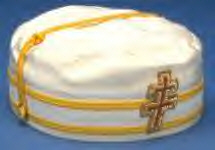
|
A
White Cap indicates a 33° Inspector General Honorary.
The white caps arc worn by those who have been honored with
the 33° Inspector General Honorary. Almost all 33° Inspector Generals
Honorary have previously been invested with the Rank and Decoration of
Knight Commander of the Court of Honour. Exceptions are by the vote of the
Supreme Council.
|

|
A
White Cap with a scarlet band indicates that the wearer is a Deputy of the
Supreme Council and an active member of the Supreme Council. |

|
The white cap with a band of blue silk velvet is worn by the
brother who is a 33° Mason and who has been elected by the Supreme Council
to the Grand Cross of the Court of Honour. This is the highest decoration
which can be bestowed on an Inspector General Honorary.
|
The
Supreme Council has set forth a rule for the correct wearing of the cap. When
wearing the cap it shall be considered to be a part of the apparel of the wearer
and shall not be removed. At the
presentation of the flag, the cap shall remain in place, and the members shall
stand at attention with the right hand over the heart.
During prayer the cap shall remain in place and the hands and
arms shall be crossed as in the 18th Degree.
The
wearing of caps is considered proper at Reunions, regularly scheduled meetings,
Maundy Thursday services, Easter celebrations, and other official Scottish Rite
functions.
back to top
SCOTTISH RITE RINGS
 The ring of the Fourteenth degree (the official ring of the
Scottish Rite) is a plain flat band of gold, not exceeding five-sixteenths
of an inch in width, and having imposed thereon an engraved or enameled
plate in the form of an equilateral triangle and within the triangle the
Hebrew letter "Yod" The ring of the Fourteenth degree (the official ring of the
Scottish Rite) is a plain flat band of gold, not exceeding five-sixteenths
of an inch in width, and having imposed thereon an engraved or enameled
plate in the form of an equilateral triangle and within the triangle the
Hebrew letter "Yod"
 The ring of the Thirty-third Degree is a triple one of gold,
like three small half-round rings side by side, united into one, not
exceeding five sixteenths of an inch in width. The ring may be plain with
no device or mark on the outside of it, or it may have on the outside of
it an equilateral triangularshaped plate with the numerals 33 on same.
Engraved within the ring should be the proper inscription, together with
the name of the brother and the date on which he received the degree. The ring of the Thirty-third Degree is a triple one of gold,
like three small half-round rings side by side, united into one, not
exceeding five sixteenths of an inch in width. The ring may be plain with
no device or mark on the outside of it, or it may have on the outside of
it an equilateral triangularshaped plate with the numerals 33 on same.
Engraved within the ring should be the proper inscription, together with
the name of the brother and the date on which he received the degree.
 The
ring with the Double-headed eagle is the most commonly worn ring of the
Scottish Rite. The ring reminds us at all times and in all places that we
must ever remain masters of ourselves and our passions, and that we have
obligations both to God and to our fellow man. The
ring with the Double-headed eagle is the most commonly worn ring of the
Scottish Rite. The ring reminds us at all times and in all places that we
must ever remain masters of ourselves and our passions, and that we have
obligations both to God and to our fellow man.
It is a distinct honor and privilege to wear rings of the Ancient and
Accepted Scottish Rite, but in wearing these symbols of the Rite you are
admonished never to wear them in any place or environs where you would not
feel free to escort your mother, sister, your daughter or your wife.
back to top
GENERAL MEMBERSHIP
REQUIREMENTS
What Masonic status is required?
Membership in good standing in a regular Symbolic
Lodge is the only Masonic status required for the purpose of petitioning for the
Scottish Rite.
Must I be invited to join Scottish
Rite?
As a Master Mason in good standing, you are encouraged
heartily to apply for membership in the Rite without awaiting a specific
invitation. You may ask a Scottish Rite friend for a petition form or contact
the nearest Scottish Rite Secretary for an application or further information.
What are the requirements of
residence?
No subordinate body of the Rite may elect any
candidate unless he is, at the time, an affiliated Master Mason in good standing
and has resided in the state one year and in the local jurisdiction (valley
area) for six months. Scottish Rite law, however, does provide for the
possibility of waiving the usual residence requirements upon the presentation of
valid reasons.
Can Scottish Rite membership be
divided?
Primary Scottish Rite membership shall not be divided
but shall be with the bodies of one Valley so far as opportunity exists.
Are there any regulations as to
physical condition?
Physical impairment shall not be considered a
disqualification from receiving the degrees of the Rite.
What is the attitude of Scottish Rite with respect to religion?
Like the Symbolic Craft, Scottish Rite does not seek
to intrude upon the prerogatives of the Church nor does it attempt to teach any
creed. Scottish Rite is not a religion and does not pretend to be a substitute
for religion. Its rituals do not hold out the hope of heavenly rewards.
The Rite does require that its adherents profess a
monotheistic belief in Almighty God and encourages its members to become active
participants in their respective churches. The Fraternity is a meeting place for
Christians, Hebrews, Moslems, Parsees and any other believers in a monotheistic
faith. As such, it has become the handmaiden of religion. To inject or discuss
religious creeds could only be divisive.
Scottish Rite does seek to teach its members a system
of morality and thereby develop in our brethren virtues and character which make
men worth while.
back to top
DEGREE STRUCTURE
Our Supreme Council has in its Archives copies of the
Degrees of the Rite of Perfection and of additional Degrees, including the 33°,
which were in use at Charleston in 1801. Some of these old Degree documents are
fragmentary, and some Degree manuscripts have not survived the
centuries.
 In the mid-19th century, Grand Commander Albert Pike revised these
Degrees. He retained the original titles, substance, and sequence. Out of his
own great scholarship and knowledge of ancient philosophies, he added new
substance and significance to the Degrees, which enhanced their importance. The
Southern Jurisdiction has continued to use the basic Albert Pike Rituals. While
the Rubrics permit variations in the manner of their rendition, the Degrees have
remained otherwise relatively unchanged. The Pike versions are also widely,
although not exclusively, used elsewhere. For the past several years, as
authorized by The Supreme Council and its Committee on Ritual and Ceremonial
Forms, Dr. Rex R. Hutchens, 33°, Grand Cross, author of several authoritative
books about Pike’s writings, has worked with a resource team of experienced
Brethren to modernize the language, accent the significance, and enhance the
dramatic performance of the Pike Degrees. The Revised Standard Ritual maintains
the moral vision and philosophical integrity of the original Pike Degrees while
making them more accessible to contemporary Brethren. The new Degrees are being
honed through authorized trial performances in Valleys throughout the Southern
Jurisdiction and will, at an appropriate time, be sanctioned by unanimous vote
of The Supreme Council as the official Ritual of the Scottish Rite, Southern
Jurisdiction, U.S.A. In the mid-19th century, Grand Commander Albert Pike revised these
Degrees. He retained the original titles, substance, and sequence. Out of his
own great scholarship and knowledge of ancient philosophies, he added new
substance and significance to the Degrees, which enhanced their importance. The
Southern Jurisdiction has continued to use the basic Albert Pike Rituals. While
the Rubrics permit variations in the manner of their rendition, the Degrees have
remained otherwise relatively unchanged. The Pike versions are also widely,
although not exclusively, used elsewhere. For the past several years, as
authorized by The Supreme Council and its Committee on Ritual and Ceremonial
Forms, Dr. Rex R. Hutchens, 33°, Grand Cross, author of several authoritative
books about Pike’s writings, has worked with a resource team of experienced
Brethren to modernize the language, accent the significance, and enhance the
dramatic performance of the Pike Degrees. The Revised Standard Ritual maintains
the moral vision and philosophical integrity of the original Pike Degrees while
making them more accessible to contemporary Brethren. The new Degrees are being
honed through authorized trial performances in Valleys throughout the Southern
Jurisdiction and will, at an appropriate time, be sanctioned by unanimous vote
of The Supreme Council as the official Ritual of the Scottish Rite, Southern
Jurisdiction, U.S.A.
The Subordinate Bodies usually confer the Degrees in
one of two ways: in a Class which meets once a week over a period of several
months, in the spring and in the autumn; or at a Reunion at which the Degrees
are conferred or communicated over a period of one or more days.
The candidates are not required to memorize any
portion of the Degrees. Every member is encouraged, however, to witness the
Degrees thereafter as frequently as possible so that he will become more fully
aware of the nature of each Degree and the lessons it teaches.
A comprehensive and concise book, A Bridge to
Light by Dr. Hutchens, summarizes our Scottish Rite Degrees and assists in a
ready understanding and appreciation of our Ritual. Also, it frequently returns
to the great cornerstone of our Order, Albert Pike’s Morals and Dogma, by
presenting eloquent quotations that clearly fix the meanings of each of the
Degrees and places them within the context of the modern era.
Having become a valuable aid, A Bridge to Light
may be used by the Ritualist desiring to improve his work and as a cordial guide
to the Brother reaching for a better understanding of the beauty and
significance of the Scottish Rite Degrees. A copy of this book is provided to
each new Fourteenth Degree initiate in the Southern Jurisdiction and is
available from The Supreme Council to any interested party.
Are Scottish Rite degrees
considered "higher" than other Masonic degrees?
The Scottish Rite shares the belief of all Masonic
organizations that there is no higher degree than that of Master Mason.
The
Supreme Council and its subordinate bodies acknowledge the Masonic supremacy of
Symbolic Grand Lodges, and the Grand Master of Masons is recognized as the
ranking Masonic officer present when in attendance at any Scottish Rite meeting.
Our degrees are in addition to and in no way
"higher" than Blue Lodge degrees. Scottish Rite work amplifies and
elaborates on the lessons of the Craft.
Interruption of a member's Symbolic standing
automatically interrupts his Scottish Rite membership whether his rank be 14°
or 33°.
What is the degree structure of
Scottish Rite?
Degree structure organization differs somewhat in
various jurisdictions throughout the world.
In the Northern Jurisdiction Scottish Rites, degree work is
carried on as follows:
- Lodge of Perfection, covering the
4° to 14° (presiding officer – Thrice Potent Master);
- Council of Princes of
Jerusalem, covering the 15° and 16° (presiding officer – Sovereign Prince);
-
Chapter of Rose Croix, covering the 17° and 18° (presiding officer – Most
wise Master),
- Consistory of Sublime Princes of the Royal Secret, covering
the 19° to 32° (presiding officer – Commander-in-Chief).
Within the Southern Jurisdiction Scottish Rites, degree work is
carried on as follows:
- Lodge of Perfection, covering the
4° to 14° (presiding officer – Thrice Potent Master);
- Chapter of Rose Croix, 15° - 18° (presiding officer - )
- Council of Kadosh, 19° - 30° (presiding officer - )
- Consistory, 31° - 32° (presiding officer - )
Some individual Valleys do not contain all four parts.
Our Canadian brethren, have only three divisions—Lodge of Perfection , 4° -
14°; Chapter of Rose Croix, 15° - 18° and Consistory, 19° - 32°. In Europe
and South America, the Rite has still different groupings of degrees to suit the
needs of each jurisdiction. Overseas, such terms as "Areopagus" and
"Sovereign (or) Grand Tribunal" may be found.
See following link for a summarize table on
Jurisdictional Differences In Degree Title
However, the basic principles and purposes remain the
same, and, as a matter of fact, it usually takes considerably longer to acquire
Scottish Rite degrees in overseas jurisdictions.
What is the Thirty-third Degree?
This is the highest or official degree which can only
be granted and conferred by the Supreme Council. It cannot be applied for. Each
year at the annual meeting of the Supreme Council, a number of Thirty-second
Degree Masons from throughout the Jurisdiction, are elected to receive the
Thirty-third Degree because of outstanding service to the Fraternity or for
service to others which reflects credit upon the Order.
Nominations for the
Thirty-third Degree are made by the Deputies of each of the states after
consultation with their fellow Active Members in each state. Nominations are
then submitted to the entire Active Membership of the Supreme Council for
ballot. Following election, candidates await the next annual meeting when the
Degree is conferred in full ceremonial form.
Must I take all degrees at once?
Although Scottish Rite degree-conferring meetings are
often scheduled to permit the 32° to be attained within a comparatively brief
period, it is not necessary for an applicant to complete all his work at one
time. A candidate is elected actually four times, once each in the Lodge,
Council, Chapter and Consistory and pays a fee for each division.
He may choose
to take the degrees of each body separately over a longer period of time rather
than in a concentrated series of meetings.
Will I witness every Scottish Rite
degree upon initiation?
Since there are twenty-nine degrees in the Scottish
Rite structure, many requiring elaborate stage preparation, it is not always
practical for a Valley to exemplify or work each one during a degree-conferring
session. The Supreme Council has set minimum standards as to the number and
selection of degrees to be presented. These standards can be and have been
increased by many Valleys to give the candidates as full a program as time and
facilities permit. Degrees not exemplified or worked are communicated or
revealed to the candidates in essence. It is hoped that members, after
initiation, will return frequently to Scottish Rite Reunions or meetings and
witness degree presentations not previously seen.
Is memorization required?
A candidate is not required to commit the Scottish
Rite degrees, signs, passwords, tokens or grips to memory. No examinations are
given either during the degree work nor for admission to the meetings of other
Valleys.
What evidence of membership is
necessary for admission to Scottish Rite meetings?
Following initiation, a member gains entrance to
meetings of his own Valley upon presentation of a current dues card. Visitors to
Scottish Rite Valleys are required to furnish proof of membership in the Rite by
a current dues card and, in some instances, by the presentation of a membership
patent or certificate.
back to top
SYNOPSIS OR LESSONS OF EACH DEGREE
As there exists two jurisdictions, not at the degrees have the
same name or teaches the same lesson; thus, they have been put together here by
each degree. The upper one belongs to the Northern Jurisdiction and the
lower one to the Southern Jurisdiction.
LODGE OF PERFECTION
|
|
Ineffable Degrees
|
|

|
4° Secret Master. This degree, emphasizes
duty, fidelity, integrity, and the necessity for secrecy in all
confidential relationships. |
| 4th degree Secret Master. Your first steps into our sanctuary
are duty, reflection and study. They teach us to honor those
relationships to God, family, country, Masonry. |
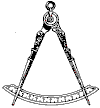 |
5th ° Perfect Master. This degree teaches that
trustworthiness is more precious than life and is the foundation of
Masonic honor. Also, we must pay due resect to the memory of a
deceased worthy Brother. |
| 5th degree Perfect Master: The degree teaches that honesty
and trustworthiness is the cornerstone of the foundation of Masonic
honor. This virtue should be in all of our undertakings. |
 |
6th ° Intimate Secretary. This degree teaches that devotion
to one's friends and zealousness in performing one's duties are
rewarding virtues. |
| 6th degree Intimate Secretary: In this degree we should learn
duty, charity and toleration. We are told to reshape ourselves and our
thinking into charity, self-control, and success. Be a peacemaker. |
|

|
7th degree Provost and Judge. This degree teaches us to judge
righteously, without respect to person, and that one law and one
custom shall apply to all Let justice be impartial, tempered with
deserved mercy. |
| 7th degree Provost and Judge: "We learn that impartial
justice protect person, property, happiness and reputation."
These degrees teach us to judge with patience and impartially. |
 |
8th ° Intendant of the Building. This degree teaches that
each new honor is meant to be a step toward perfection in the moral
code; |
| 8th degree Intendant of the Building: We should strive for
perfection by using the great principles of "God's inherent love,
charity, morality and kindness". |
|

|
9th ° Master Elect of Nine. The lessons taught in this
degree are that we should be careful not to be too zealous in
executing justice, even in a good cause, and that we should avoid
injuring or harming any person by hasty or irresponsible action. |
| 9th degree Elu of the Nine: Scottish Rite virtues are at the
very heart of this degree, truth, candor and generosity. We should use
these to shape our lives and conduct. |
|

|
10th ° Master Elect of Fifteen. The teachings of this degree
are that ambition and jealousy can tempt men to evil deeds, that
righteousness will eventually triumph over evil, and that evil doers
will be punished |
| 10th degree Elu of the Fifteen: This degree teaches
toleration of others. Everyone has the right to his own political or
spiritual views |
|

|
11th ° Sublime Master Elected. This degree dwells on
good citizenship. Evil doings should be punished. Honesty and respect
for others should be rewarded. Be earnest, honest and sincere. |
| 11th degree Elu of the Twelve: This degree teaches sympathy.
We should sympathetic to our brother masons and to all mankind as
well. |
 |
12th ° Grand Master Architect. This degree teaches that the
Mason, as he learns to use the tools and instruments of his trade and
skill, also learns to contemplate the many aspects of life and deal
with them as a child of God, steadily advancing to those heights of
experience which we call perfection. |
| 12th degree Master Architect: This degree teaches faith in
moral and virtues and in God. "Life is what each man makes of it;
the optimist turns a trial into a blessing. |
 |
13th ° Master of the Ninth Arch. This degree teaches that
difficulties and dangers, however great, should not deter the true and
faithful brother from progressing onward to perfection. It teaches the
great truth that the finest things in life come only as the result of
constant and often painful effort. |
| 13th degree Royal Arch of Solomon: This degree teaches
liberty in our mind and our hearts, motivated by duty and honor. |
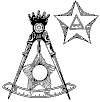 |
14th ° Grand Elect Mason In the Scottish Rite. This degree
is the summit of Ancient Craft Masonry. As the crowning degree of the
Lodge of Perfection, its essence is the holiness of God and reverence
for His Holy Name. God will not hold him guiltless that takes His Name
in vain. Council of Princes of Jerusalem |
| 14th degree Perfect Elu: In the degree we learn to reflect
and look into ourselves. We should strive to be true to ourselves and
our God. |
CHAPTER ROSE CROIX DEGREE
THE TEACHINGS OF THE ROSE CROIX DEGREE
The
Degree of Rose Croix teaches three things: the unity, immutability and
goodness of God; the immortality of the soul; and the ultimate defeat
and extinction of evil and wrong and sorrow, by a Redeemer or Messiah,
yet to come, if he has not already
appeared.
It replaces
the three pillars of the old Temple, with three that have already been
explained to you - Faith
(in God, Mankind, and man’s self). Hope (in victory over evil, the
advancement of Humanity, and a hereafter), and Charity (relieving the
wants, and tolerant of errors and faults of others).
- Albert S. Pike |
| ---- |
 |
15th ° Knight of the East or Sword. This degree teaches the
important lessons of loyalty to conviction and devotion to right. |
| 15th degree Knight of the East of the Sword or of the Eagle:
In this degree "we learn fidelity to obligations and perseverance
of purpose under difficulties and discouragement." |
 |
16th ° Prince of Jerusalem. This degree teaches loyalty to
truth and fidelity to duty. |
| 16th degree Prince of Jerusalem: This degree teaches
"heroism of patience, the nobility of self-sacrifice" and
compassionate judgment, along with charity, fidelity and brotherhood. |
 |
17th ° Knight of the East and West. The lessons of
this degree are that loyalty to God is man's primary allegiance, and
the temporal governments not founded upon God and His righteousness
will inevitably fall. |
| 17th degree Knight of the East and West: The lessons of this
degree are that loyalty to God is man's primary allegiance, and the
temporal governments not founded upon God and His righteousness will
inevitably fall. |
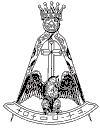 |
18th ° Knight of the Rose Croix of HR D.M. The lessons
taught in this degree are that man must have a new Temple in his heart
where God is worshipped in spirit and in truth and that he must have a
new law of love which all men everywhere may understand and practice.
This degree affirms the broad principles of universality and tolerance. |
| 18th degree Knight of the Rose Croix: This degree teaches
that life and it's strengths come from God. The rose signifies the
dawn and the cross is a sacred symbol of antiquity in many cultures. To
be tolerant of others errors and faults. |
COUNCIL OF KADOSH
Faith in moral principles, in virtue, and
God, is as necessary for the guidance of a man, as instinct is for the
guidance of an animal.
-- Albert Pike
|
| ---- |
 |
19th ° Grand Pontiff. This degree proclaims the
spiritual unity of all who believe in God and cherish the hope of
immortality, no matter what religious leader they follow or what creed
they profess. It is concerned primarily with the perennial conflict
between light and darkness, good and evil, God and Satan. |
| 19th
degree Pontiff:
The lessons of this degree are learned from the past and how it
affects the present and the way we live in the future. We always strive to
endure, produce and improve the world as it surrounds us. |
 |
20th ° Master ad Vitam. This degree is a drama of
the American spirit confronting the challenge of disloyalty and treason.
Masonic principles and leadership are subjected to a crucial test. The
degree demonstrates the Masonic condemnation of all who conspire against
the security of the nation and the happiness of our people. |
| 20th
degree Master of the Symbolic Lodge: This degree shows us Liberty,
Fraternity and Equality. These teach moral, religious and philosophical
understanding. This degree helps one to comprehend Deity, forces of
nature, good and evil. |
 |
21st ° Patriarch Noachite. This degree teaches that
Freemasonry is not a shield for evil doing and that justice is one of the
chief supports of our fraternity. |
| 21st degree Noachite, or Prussian Knight: The
lesson from this degree is to learn that arrogance; defamation and
cowardice are unworthy attributes of a mason, and that humility, modesty
and courtesy are the true virtues of men and Masons. |
 |
22nd ° Prince of Libanus. In this degree, the
dignity of labor is demonstrated. It is no curse, but a privilege, for man
to be allowed to earn his sustenance by work. Idleness, not labor, is
disgraceful. |
| 22nd degree Knight of the Royal Ax, Prince of Libanus:
This
degree teaches, "if a job is worth doing its worth doing well".
By doing good work we improve character and become better citizens. |
 |
23rd ° Chief of the Tabernacle. This degree teaches
that impure thought and selfish, unworthy ambitions are corrupting and
destructive, and that a man who forgets his duty to family, country, and
God will be morally and spiritually destroyed |
| 23rd degree Chief of the Tabernacle: This
degree teaches that the man who forgets his duty to God, family, country,
and himself will be in danger of morally and spiritually destruction by
thoughts unworthy ambition. |
 |
24th ° Prince of the Tabernacle. This degree teaches
that a mutual belief in one true, living God should bind men together in
the service of humanity and in a worldwide brotherhood |
| 24th degree Prince of the Tabernacle: In
this degree a Mason must show evidence of compassion, piety and justice.
After initiation he may "manifest faithfully the social virtues in
order to receive the rewards", to serve humanity through our
brotherhood. |
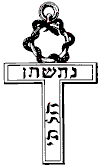 |
25th ° Knight of the Brazen Serpent. This degree
teaches that there are desert stretches in every individual life in the
history of every nation, with a resultant breakdown of discipline and loss
of faith. This degree is a clarion call to faith-in ourselves, in each
other, and in God. |
| 25th degree Knight of the Brazen Serpent: This
degree tackles the concept of pure, celestial, eternal soul of man. He
looks within his faith, life, and God and to get a clear look at his inner
self. |
 |
26th ° Prince of Mercy. This degree teaches the
quality of mercy; that it is a spirit of compassion and a tenderness of
heart which dispose us to overlook injuries and to treat an offender
better than he deserves. |
| 26th degree Prince of Mercy: In
this degree we search for "the rewards of the trinity of Gods
attributes - wisdom or intelligence, force or strength, harmony or
beauty." |
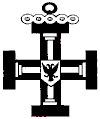 |
27th ° Commander of the Temple. This degree teaches
that Scottish Rite Freemasonry believes in the concept of a free church in
a free state, each supreme in its own sphere, neither seeking to dominate
the other, but cooperating for the common good. |
| 27th degree Knight Commander of the Temple: This
lesson of this degree teaches us to scorn selfishness, and to uphold the
knightly virtues of charity, truth and honor. We should always strive to
assist the poor, helpless and infirm. |
 |
28th ° Knight of the Sun. This degree using the
symbolism of the tools and implements of architecture teaches that by
building high moral character among its adherents, Freemasonry may advance
man's determined quest for the achievement of unity and good will
throughout the world |
| 28th degree Knight of the Sun, Adept: This
degree teaches that our love for God manifests itself in our love for
Truth, Justice and Nobility of Soul. |
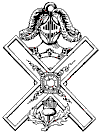 |
29th ° Knight of ST Andrew. This degree emphasizes
the Masonic teachings of equality and toleration We are reminded that no
one man, no one Church, no one religion, has a monopoly of truth; that
while we must be true and faithful to our own convictions, we must respect
the opinions of others. |
| 29th degree Scottish Knight of ST Andrew: The
virtues of this degree are "Love of God, loyalty to superiors,
faithful adherence to promise and active resistance to unfair
judgment." |
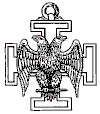 |
30th ° Grand Elect Knight Kadosk This degree sets
forth the tests and ceremonies that symbolize the experiences we must
undergo in the building of excellence in character |
| 30th degree Knight Kadosh or Knight of the Black and
White Eagle: The lesson of
this degree is to be true to ourselves, to stand for what is right and
just in our lives today. To believe in God, country and ourselves. |
CONSISTORY
Evil and wrong and suffering are but temporary, the
discords of one great harmony, and in His own good time, they will
lead by infinite modulations to the great harmonic chord of Truth,
Love Peace, and Happiness.
Where Freemasonry flourishes, there will be found
the highest type of citizenship and the best standard of living.
-- Albert Pike |
| |
 |
31st ° Grand Inspector Inquisitor Commander. This degree
teaches that we should give every man the benefit of innocence and
purity of intentions. He who would judge others must first judge
himself. |
| 31st degree Inspector Inquisitor Commander: This
degree teaches prayerful self-examination. The mistakes today should
not be committed tomorrow. Simply, the daily look at ones self to
learn to live with the future.
|
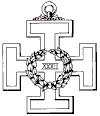 |
32nd ° Sublime Prince of the Royal Secret. This degree
describes the victory of the spiritual over the human in man and the
conquest of appetites and passions by moral sense and reason. The
exemplar represents every Freemason eager to serve humanity but caught
between self-interest and the call of duty. Duty often requires
sacrifice, sometimes the supreme sacrifice.
|
| 32nd degree Master of the Royal Secret: The
lessons of this degree are that "genuine brotherhood requires
mutual regard, opinion, esteem and charity". We always look for
the good in all, make allowances for other's short comings. We trust
the Supreme Architect to lead us to friendship, morality and brotherly
love. |
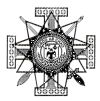 |
THIRTY THIRD DEGREE
|
| |
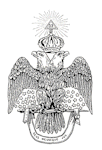 |
The
Thirty-third Degree is conferred by the Supreme Council upon members
of the Rite in recognition of outstanding service to the Rite, or, in
public life, to the principles taught in the Degrees. The 33° or KCCH
cannot be asked for and if asked for must be refused. At its biennial
session the Supreme Council elects members of the Rite to receive the
Degree. These 33° Masons are Inspectors General honorary and honorary
members of the Supreme Council. The active members of the Supreme
Council are chosen from among them.
At
its biennial session certain 32° Masons who have attained the age of
35 years and have been 32° Masons at least 4 years, who have rendered
signal service to the Rite, are chosen to receive the Rank and
Decoration of Knights Commander of the Court of Honour. The decoration
is conferred in a very impressive Ceremony of investiture in the local
Bodies. This is a rank and decoration and not a degree. ‘l’he
members who hold it are designated 32°. KCCH. A member must be a KCCH
for at least four years before he can be nominated for election to
receive the 33° |
*Quotes
are from Clausen's Commentaries on Morals and Dogma
back to top
|
![]()







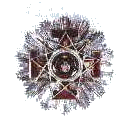




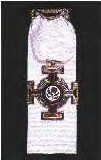




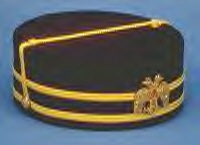




 The ring of the Fourteenth degree (the official ring of the
Scottish Rite) is a plain flat band of gold, not exceeding five-sixteenths
of an inch in width, and having imposed thereon an engraved or enameled
plate in the form of an equilateral triangle and within the triangle the
Hebrew letter "Yod"
The ring of the Fourteenth degree (the official ring of the
Scottish Rite) is a plain flat band of gold, not exceeding five-sixteenths
of an inch in width, and having imposed thereon an engraved or enameled
plate in the form of an equilateral triangle and within the triangle the
Hebrew letter "Yod"
 The ring of the Thirty-third Degree is a triple one of gold,
like three small half-round rings side by side, united into one, not
exceeding five sixteenths of an inch in width. The ring may be plain with
no device or mark on the outside of it, or it may have on the outside of
it an equilateral triangularshaped plate with the numerals 33 on same.
Engraved within the ring should be the proper inscription, together with
the name of the brother and the date on which he received the degree.
The ring of the Thirty-third Degree is a triple one of gold,
like three small half-round rings side by side, united into one, not
exceeding five sixteenths of an inch in width. The ring may be plain with
no device or mark on the outside of it, or it may have on the outside of
it an equilateral triangularshaped plate with the numerals 33 on same.
Engraved within the ring should be the proper inscription, together with
the name of the brother and the date on which he received the degree.
 The
ring with the Double-headed eagle is the most commonly worn ring of the
Scottish Rite. The ring reminds us at all times and in all places that we
must ever remain masters of ourselves and our passions, and that we have
obligations both to God and to our fellow man.
The
ring with the Double-headed eagle is the most commonly worn ring of the
Scottish Rite. The ring reminds us at all times and in all places that we
must ever remain masters of ourselves and our passions, and that we have
obligations both to God and to our fellow man.
 In the mid-19th century, Grand Commander Albert Pike revised these
Degrees. He retained the original titles, substance, and sequence. Out of his
own great scholarship and knowledge of ancient philosophies, he added new
substance and significance to the Degrees, which enhanced their importance. The
Southern Jurisdiction has continued to use the basic Albert Pike Rituals. While
the Rubrics permit variations in the manner of their rendition, the Degrees have
remained otherwise relatively unchanged. The Pike versions are also widely,
although not exclusively, used elsewhere. For the past several years, as
authorized by The Supreme Council and its Committee on Ritual and Ceremonial
Forms, Dr. Rex R. Hutchens, 33°, Grand Cross, author of several authoritative
books about Pike’s writings, has worked with a resource team of experienced
Brethren to modernize the language, accent the significance, and enhance the
dramatic performance of the Pike Degrees. The Revised Standard Ritual maintains
the moral vision and philosophical integrity of the original Pike Degrees while
making them more accessible to contemporary Brethren. The new Degrees are being
honed through authorized trial performances in Valleys throughout the Southern
Jurisdiction and will, at an appropriate time, be sanctioned by unanimous vote
of The Supreme Council as the official Ritual of the Scottish Rite, Southern
Jurisdiction, U.S.A.
In the mid-19th century, Grand Commander Albert Pike revised these
Degrees. He retained the original titles, substance, and sequence. Out of his
own great scholarship and knowledge of ancient philosophies, he added new
substance and significance to the Degrees, which enhanced their importance. The
Southern Jurisdiction has continued to use the basic Albert Pike Rituals. While
the Rubrics permit variations in the manner of their rendition, the Degrees have
remained otherwise relatively unchanged. The Pike versions are also widely,
although not exclusively, used elsewhere. For the past several years, as
authorized by The Supreme Council and its Committee on Ritual and Ceremonial
Forms, Dr. Rex R. Hutchens, 33°, Grand Cross, author of several authoritative
books about Pike’s writings, has worked with a resource team of experienced
Brethren to modernize the language, accent the significance, and enhance the
dramatic performance of the Pike Degrees. The Revised Standard Ritual maintains
the moral vision and philosophical integrity of the original Pike Degrees while
making them more accessible to contemporary Brethren. The new Degrees are being
honed through authorized trial performances in Valleys throughout the Southern
Jurisdiction and will, at an appropriate time, be sanctioned by unanimous vote
of The Supreme Council as the official Ritual of the Scottish Rite, Southern
Jurisdiction, U.S.A.


























